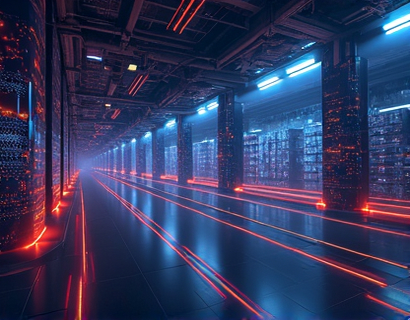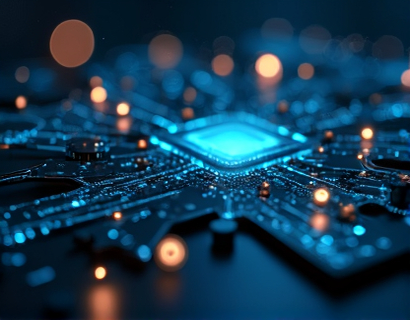AI-Driven Personalized Learning: Transforming Education Through Adaptive Technology
In the rapidly evolving landscape of education, the integration of artificial intelligence (AI) has emerged as a transformative force, redefining how we approach learning. AI-driven personalized learning platforms are revolutionizing the educational experience by offering tailored, adaptive education that caters to the unique needs and learning styles of each individual. This shift towards personalized learning is not just a trend but a necessary evolution to ensure that education remains accessible, effective, and engaging for all students, from K-12 to lifelong learners.
The Need for Personalized Learning
Traditional educational models often struggle to meet the diverse needs of students, leading to a one-size-fits-all approach that can leave many learners behind. Recognizing and addressing individual differences in learning pace, style, and interests is crucial for fostering an inclusive and effective learning environment. AI-driven personalized learning platforms bridge this gap by leveraging advanced algorithms and machine learning techniques to create customized learning paths for each user. These platforms analyze vast amounts of data to understand a student's strengths, weaknesses, and preferences, allowing for real-time adjustments to the learning material and pace.
How AI Personalizes the Learning Experience
At the core of AI-driven personalized learning is the ability to adapt to the unique characteristics of each learner. Here’s how this process works:
- Data Collection: The platform gathers data from various sources, including user interactions, performance metrics, and feedback. This data forms the foundation for understanding the learner's profile.
- Analysis and Insights: Advanced algorithms analyze the collected data to identify patterns, strengths, and areas for improvement. Machine learning models continuously refine these insights to provide more accurate and relevant recommendations.
- Customized Content Delivery: Based on the insights gained, the platform tailors the learning content to match the learner's needs. This includes adjusting the difficulty level, presenting material in different formats, and incorporating relevant examples and exercises.
- Real-Time Feedback: AI-driven platforms offer instant feedback, allowing learners to correct mistakes and reinforce understanding immediately. This immediate reinforcement helps solidify knowledge and builds confidence.
- Adaptive Learning Paths: The platform dynamically adjusts the learning path based on the learner's progress. If a student excels in a particular area, the platform can introduce more challenging content to keep them engaged. Conversely, if a student struggles, the platform provides additional support and resources to help them catch up.
Benefits of AI-Driven Personalized Learning
The benefits of AI-driven personalized learning are numerous and profound, impacting both students and educators in positive ways:
Enhanced Learning Outcomes
Personalized learning ensures that each student receives the support and challenges they need to succeed. By addressing individual gaps and building on strengths, learners can achieve better academic outcomes. Studies have shown that personalized learning can lead to increased test scores, higher retention rates, and a deeper understanding of the material.
Increased Engagement and Motivation
When learners engage with content that is tailored to their interests and learning style, they are more likely to stay motivated and invested in their education. AI-driven platforms use gamification, interactive elements, and personalized goals to keep students engaged. This increased engagement translates into a more enjoyable and fulfilling learning experience.
Support for Diverse Learning Styles
Every student has a unique learning style, whether they are visual, auditory, kinesthetic, or a combination. AI-driven platforms can present content in multiple formats, such as videos, text, interactive simulations, and hands-on activities, ensuring that each learner can access and process information in the way that works best for them. This flexibility is particularly beneficial for students with special educational needs, who often require customized approaches to thrive.
Empowerment of Lifelong Learners
Personalized learning is not limited to traditional students; it extends to lifelong learners seeking to acquire new skills or deepen their knowledge in specific areas. AI-driven platforms provide continuous learning opportunities, allowing individuals to upskill and reskill at their own pace. This empowerment is crucial in a rapidly changing job market where adaptability and continuous learning are essential.
Reduced Teacher Workload
AI-driven personalized learning can significantly alleviate the workload of educators. By automating tasks such as grading, providing feedback, and identifying areas of struggle, teachers can focus more on what they do best—guiding and inspiring students. This shift allows educators to provide more personalized attention and support, enhancing the overall teaching experience.
Implementing AI-Driven Personalized Learning
Integrating AI-driven personalized learning into educational settings requires a thoughtful and strategic approach:
Choosing the Right Platform
Selecting an AI-driven personalized learning platform is a critical first step. Look for platforms that offer robust features such as adaptive content, real-time feedback, and comprehensive analytics. It's important to choose a platform that aligns with your educational goals and is user-friendly for both students and educators.
Professional Development for Educators
To fully leverage AI-driven personalized learning, educators need to be equipped with the necessary skills and knowledge. Providing professional development opportunities helps teachers understand how to integrate these tools effectively into their teaching practices. This includes training on data interpretation, using feedback to inform instruction, and creating a supportive learning environment.
Creating a Supportive Environment
A successful implementation of AI-driven personalized learning requires a supportive school culture that embraces innovation and continuous improvement. Administrators should foster a collaborative environment where teachers can share best practices, address challenges, and celebrate successes. Parental involvement is also crucial, as they play a key role in supporting their children's learning journey.
Ensuring Data Privacy and Security
With the extensive data collection required for personalized learning, ensuring data privacy and security is paramount. Educational institutions must adhere to strict data protection policies and comply with relevant regulations to safeguard student information. Transparency about data usage and providing parents and students with control over their data can help build trust and confidence in the system.
Challenges and Considerations
While AI-driven personalized learning offers numerous benefits, it also presents several challenges that need to be addressed:
Data Privacy Concerns
The collection and analysis of vast amounts of student data raise significant privacy concerns. It is essential to implement robust security measures and transparent policies to protect sensitive information. Educators and administrators must be vigilant in monitoring data usage and ensuring compliance with legal standards.
Equity and Access
Ensuring that all students have equal access to AI-driven personalized learning tools is a critical consideration. Disparities in technology access and digital literacy can exacerbate existing inequalities. Educational institutions must work to bridge the digital divide by providing necessary resources and support to underserved communities.
Overreliance on Technology
While AI-driven tools are powerful, they should complement rather than replace human interaction and teaching. Overreliance on technology can lead to a lack of critical thinking and interpersonal skills. A balanced approach that integrates technology thoughtfully is essential to maintain the human element in education.
Future Prospects of AI-Driven Personalized Learning
The future of AI-driven personalized learning is promising, with ongoing advancements poised to further enhance the educational experience:
Integration with Other Technologies
The convergence of AI with other technologies such as virtual reality (VR), augmented reality (AR), and the Internet of Things (IoT) can create immersive and interactive learning environments. These technologies can provide hands-on, experiential learning opportunities that were previously impossible, making education more engaging and effective.
Predictive Analytics
Advanced predictive analytics can help identify potential issues before they arise, allowing for proactive interventions. By analyzing patterns in student data, AI can predict areas where a student might struggle and provide targeted support to prevent setbacks.
Global Reach
AI-driven personalized learning has the potential to break down geographical barriers, making high-quality education accessible to learners worldwide. Online platforms can reach remote and underserved areas, democratizing access to education and fostering a more inclusive global community.
Conclusion
AI-driven personalized learning represents a significant leap forward in education, offering a tailored, adaptive, and supportive learning experience that empowers students to reach their full potential. By addressing individual needs and learning styles, these platforms not only enhance academic outcomes but also foster a love for learning that extends beyond the classroom. As technology continues to evolve, the potential for AI to transform education is vast, promising a future where every learner has the opportunity to succeed.










































